Travel Tips
Off the Brochure Travel Guide: Auckland, New Zealand
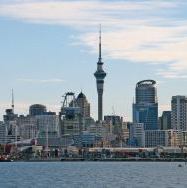 Though Auckland is New Zealand’s largest city, visitors often don’t spend much time there.
Though Auckland is New Zealand’s largest city, visitors often don’t spend much time there.
They tend to zip through the major sights in a day or two before heading off to other corners of the country in seek of bungee-jumping (“bungy” in New Zealand) adventures or awe-inspiring fiords.
But savvy travelers know that Auckland has plenty to occupy those who are willing to stay a while and explore its beaches, islands, parks, shops and markets.
And though there are plenty of popular museums and restaurants in the City of Sails, the real character of the city is to be found in its smaller gems.
So if you plan to be in Auckland a few days, spend the first day doing the “tourist” thing: wander down Queen Street and head to the top of Sky Tower; visit the Auckland Museum and marvel at the Maori artifacts; stroll through One Tree Hill domain and admire the lush greenery; and eat at one of the tasty seafood restaurants on Queen’s Wharf. But then for the following few days, check out some of these lesser-known treats.
Though it’s located in a trendy neighborhood near Auckland’s city center, Parnell Road offers a blend of unique boutique gift and clothing shops, trendy bistros and historical landmarks.
 The Chocolate Boutique offers more than the standard sweet-shop fare. They not only have unique chocolate-filled gift boxes and goodie baskets, but they also stock diabetic chocolate, New Zealand-made chocolate, and quirky tongue-tempters such as chocolate liqueur and chocolate coffee beans. And don’t miss the chance to sit for a while at the tiny but outstanding café, which has an extraordinary menu of drinks and treats—from the super-thick flavored hot chocolates that come in varieties such as Mexican spice and chili pepper, to the “submarinos,” which are chocolate bars submerged in hot steamed milk. 323 Parnell Road; www.chocolateboutique.co.nz
The Chocolate Boutique offers more than the standard sweet-shop fare. They not only have unique chocolate-filled gift boxes and goodie baskets, but they also stock diabetic chocolate, New Zealand-made chocolate, and quirky tongue-tempters such as chocolate liqueur and chocolate coffee beans. And don’t miss the chance to sit for a while at the tiny but outstanding café, which has an extraordinary menu of drinks and treats—from the super-thick flavored hot chocolates that come in varieties such as Mexican spice and chili pepper, to the “submarinos,” which are chocolate bars submerged in hot steamed milk. 323 Parnell Road; www.chocolateboutique.co.nz
The Hoglund Art Glass Gallery offers one-of-a kind handmade blown-glass pieces made in the Hoglund family’s workshop in the South Island town of Nelson. Swedish-born glass artists Ola and Marie Hogland started the business in 1982, and their stable of artisans now produce a stunning array of award-winning designs from their signature glass penguins, to luminous abstract plates, vases and wall pieces. The designs reflect the landscape and flavor of New Zealand. 285 Parnell Road; www.hoglund.co.nz
Karangahape Road has a bit of an undeserved bad reputation because of the fact that it used to be the red-light area of Auckland. Usually called by its nickname, K’ Road, it borders the edge of downtown and is now primarily known for its bohemian vibe.
K’ Road does have a couple of massage parlors and strip clubs, but it also has a number of funky boutiques and eateries that reflect the road’s immigrant influence and provide a refreshing change of scenery from the chain-store monotony of Queen Street. There are groovin’ music shops (some that sell vinyl), hip ethnic cafes, vintage clothing boutiques and thrift shops, offbeat galleries (including one devoted to urban graffiti art) and Polynesian homewares stores. At night the place turns into nightclub central, with one of the most flamboyant acts being the wildly entertaining drag cabaret show at Caluzzi. 461 Karangahape Road; www.caluzzi.co.nz
BEACHES
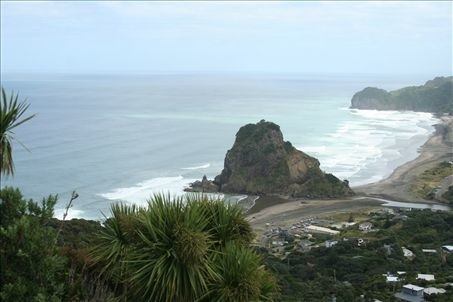 Forty-five minutes west of Auckland is the laid-back beach town of Piha. Though there is much to do in Piha, getting there is half the fun because the road meanders through miles of thick, gorgeous natural forest. If you have time, stop at the Arataki visitor centre which lies at the highest point on Highway 16, halfway between Auckland and Piha. On a clear day you’ll be able to see all the way to the ocean and back to Auckland while you navigate the nature trails which loop around the complex and through a stand of majestic kauri trees.
Forty-five minutes west of Auckland is the laid-back beach town of Piha. Though there is much to do in Piha, getting there is half the fun because the road meanders through miles of thick, gorgeous natural forest. If you have time, stop at the Arataki visitor centre which lies at the highest point on Highway 16, halfway between Auckland and Piha. On a clear day you’ll be able to see all the way to the ocean and back to Auckland while you navigate the nature trails which loop around the complex and through a stand of majestic kauri trees.
Once you get to Piha, have lunch at the burger joint, check out the surf shop, or head to the black sand beach. Be aware that the beaches in and around Piha are not for the faint of heart: The surf is rough and full of rip currents, and the black sand can get very hot. On summer weekends there are crowds, but most other times you’ll get the place to yourself.
In fact, winter is a great time to visit Piha if you’re not concerned with sunbathing; the scarcity of people means that you’ll be able to walk unhindered beneath the cliffs, which lie not far from the rugged coastline (featured in the movie The Piano). You might even have an encounter with a friendly seal or two. www.pihabeach.co.nz; Arataki Visitor Centre
There are also two great hiking trails: one that starts on Glen Esk Road and takes you through the dense, moist forest to a spectacular waterfall and back in about an hour and a half; the other starts at the south end of the beach and ascends for 20 minutes to a lookout point and a blowhole that comes to life most spectacularly during heavy surf.
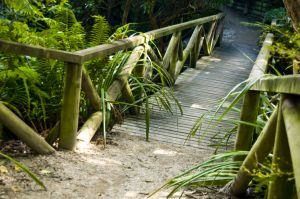 Unlike the west coast beaches, Auckland’s North Shore beaches offer calm waters and fine white sand. They’re not as gorgeous as Hawaii’s or Tahiti’s beaches, but they are plenty good for the locals, who flock to them in the summer months.
Unlike the west coast beaches, Auckland’s North Shore beaches offer calm waters and fine white sand. They’re not as gorgeous as Hawaii’s or Tahiti’s beaches, but they are plenty good for the locals, who flock to them in the summer months.
Takapuna, Milford and Cheltenham are the three main towns with east-facing beaches that afford excellent views of the islands of the Hauraki Gulf. On a really clear day you can see all the way to the Coromandel Peninsula from Cheltenham’s gentle tidal beach. North Shore Beaches
MARKETS
Although many tourists head to the downtown Aotea Square market at the corner of Victoria and Queen streets, more interesting wares can be found at other markets scattered through the outlying areas of the city.
Otara Market in situated in the rather run-down suburb of Otara, but it is worth it to make the trek to this unremarkable neighborhood in order to experience all that the market has to offer. Though a few vendors do sell cheesy T-shirts and cheap trinkets, you can easily spend half a day browing the more than 250 booths full of exotic homemade pasta sauces, herbal supplements such as kava, hand-made jewelry, Polynesian and Maori crafts and fabrics, and loads of cheap fruit and vegetables. Otara Market
Visiting the once-a-month Titirangi Village Market offers a good excuse to check out the slightly bohemian village of Titirangi, which is home to many artists, musicians, nature enthusiasts, organic food restaurants, and others who just like the proximity to Auckland but not its hustle and bustle. The market reflects the “alternative” set that calls Titirangi home and contains more than 100 stalls that sell art, crafts, produce and collectibles. There’s also a band which plays live folk music, and a natural food cafe. Located at the Titirangi Memorial Hall, S. Titirangi Road. Open the last Sunday of the month, 10 a.m.-2 p.m. Titirangi Village Market
Karangahape Road has not one but two weekend markets that reflect the funky feel of the neighborhood. The Saturday street market features crafts, vintage clothes, books, jewelry, plants, Polynesian items, and more. Sunday’s “Trash and Treasures” collectibles market has a bit more of a flea-market feel to it, and shoppers can find all manner of cast-off clothes, household items, used appliances and furniture. K’ Road, motorway overbridge, Saturdays 10 a.m.- 4 p.m.; K’ Road Trash and Treasures market: K’ Road parking lot, Sundays 6 a.m. -11 a.m. Karangahape Road
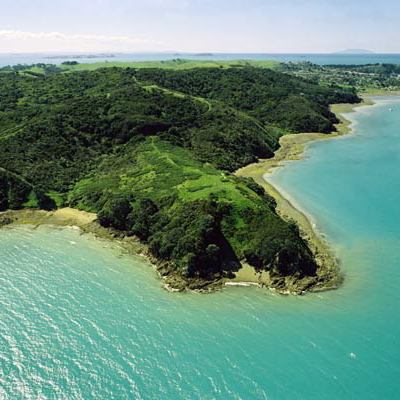 ISLANDS
ISLANDS
Many fly-by-night visitors to Auckland forget that there are several islands in the Hauraki Gulf, most of which are accessible via a short boat ride from Waitemata Harbor. Despite the close proximity, the islands have an atmosphere that is far removed from that of the mainland.
Waiheke Island, the largest of the populated islands, has become more developed and residential in the last few years, but still retains most of the sleepy charm of its past. Home to 6,800 people, many of whom are artists and musicians seeking inspiration without distraction, it is not surprising that the island boasts some excellent galleries, and an annual Easter jazz festival.
A 40-minute ferry ride will get you to the port of Oneroa, which has some excellent laid-back food joints and bistros such as The Lazy Lounge Café and the Oneroa Delicatessen. There are several great white-sand beaches around the island—including a nudist beach— and don’t forget the wineries! There are about 40 on the island, many of which are open for tastings and tours. Pick up a copy of the Waiheke Winegrowers Map at the Oneroa visitor center to get the scoop on locations and opening hours.
Since art and music are such a prominent features of the island, why not spend some time browsing Whittaker’s Musical Museum, or the Artworks Community Art center in Oneroa? The musical museum features a range of antique instruments and mesmerizing live performances, while the art center offers a wide range of works created by local craftspeople and artists. www.ki-wi.co.nz/waiheke.htm
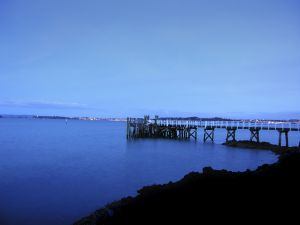 For a completely different island experience, visit Rangitoto Island, a recently-extinct volcano about six miles northeast of Auckland, and about the same distance west of Waiheke. Whereas Waiheke Island is all about culture and cuisine, Rangitoto is all about hiking and nature. There are no roads, restaurants or amenities on the island, just trails that lead you through its rugged fractured lava fields to the summit crater and beyond.
For a completely different island experience, visit Rangitoto Island, a recently-extinct volcano about six miles northeast of Auckland, and about the same distance west of Waiheke. Whereas Waiheke Island is all about culture and cuisine, Rangitoto is all about hiking and nature. There are no roads, restaurants or amenities on the island, just trails that lead you through its rugged fractured lava fields to the summit crater and beyond.
If you venture to Rangitoto, you’ll need to bring sturdy footwear and a wide-brimmed hat to protect yourself from the sharp rocks and sun. The place is set up for day trippers, but if you are determined to stay overnight you’ll have to bring a tent, which can be pitched on the Eastern side of adjacent Motutapu Island.
The trek will take you three hours or so, but is worth it for nature lovers who will be treated to an unusual array of plant life. Hardy patches of pohutukawa trees cling to bits of soil wedged between the rocks, and the Kidney Fern Grove is chock-full of unique miniature ferns which unfurl after it rains. If you’re there in September, look for the signs that direct you to the Kowhai Grove, a cluster of bushes that erupt in beautiful yellow blossoms during that month. Rangitoto Island Scenic Reserve Web site.
By Karen Elowitt for PeterGreenberg.com.
We’ve got the scoop on New Zealand. Don’t miss Off the Brochure Travel Guide: Christchurch, New Zealand.
These travel tips could also give you some great ideas for fun in New Zealand:
Check out other cities in our Off the Brochure Travel Guide series…












